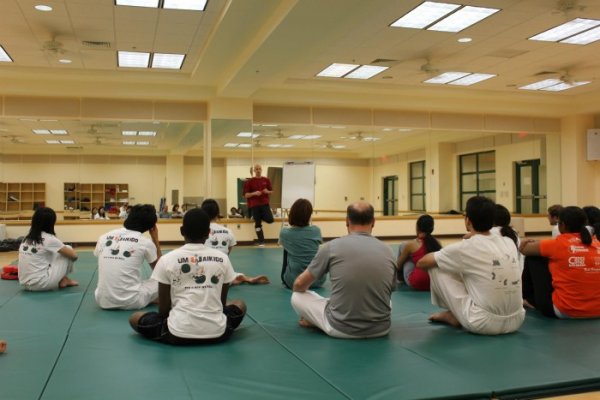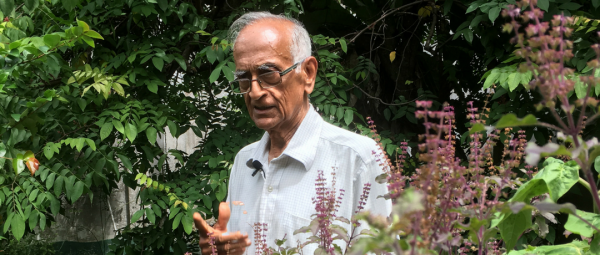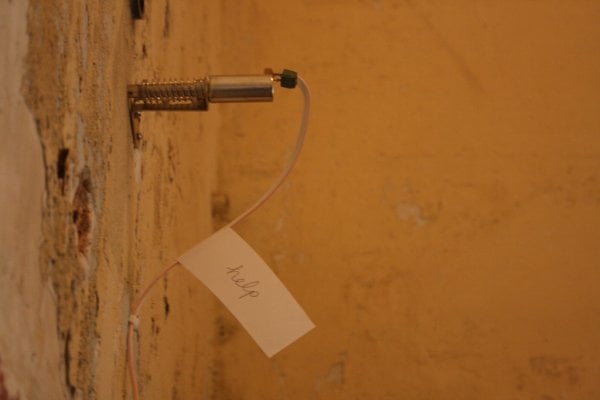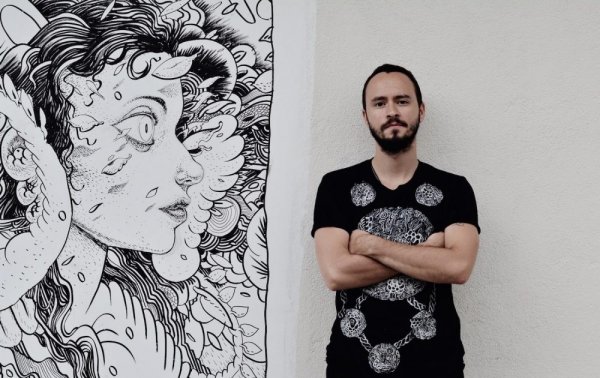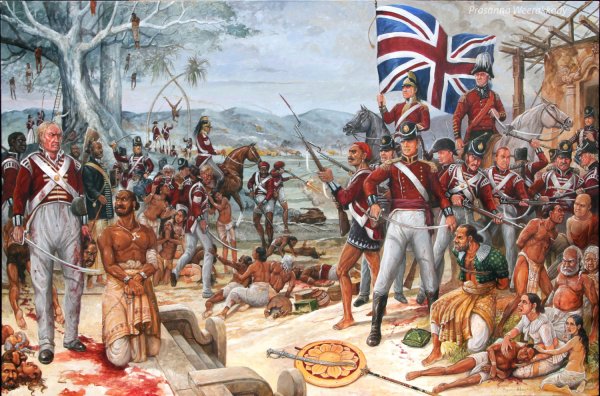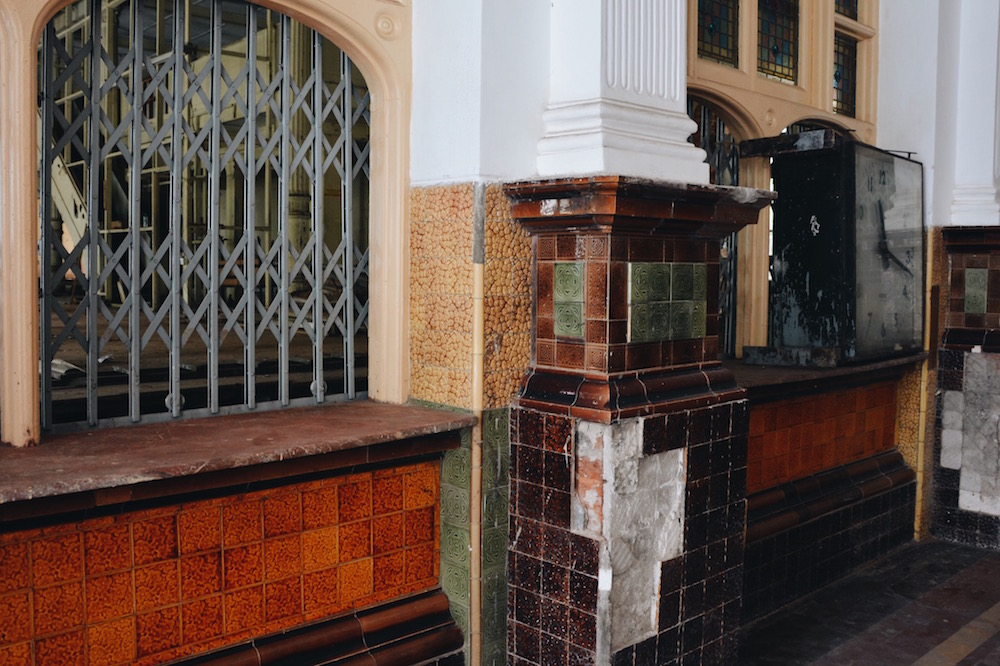
Across the street from the President’s House down Janadhipathi Mawatha stands the former General Post Office (GPO) building, an imposing structure left over from the colonial era that, over the next week or so, will be playing host to the fourth edition of Cinnamon Colomboscope. Starting today (August 25) and running through September 1, this year’s festival ‒ titled Testing Grounds: Art and Digital Cultures in South Asia and Europe ‒ looks to demonstrate the role played by digital technologies in shaping our collective perception and conception of the world. Quite apart from the festival lineup, however, the host building provides an attraction in itself and has its own story to tell.
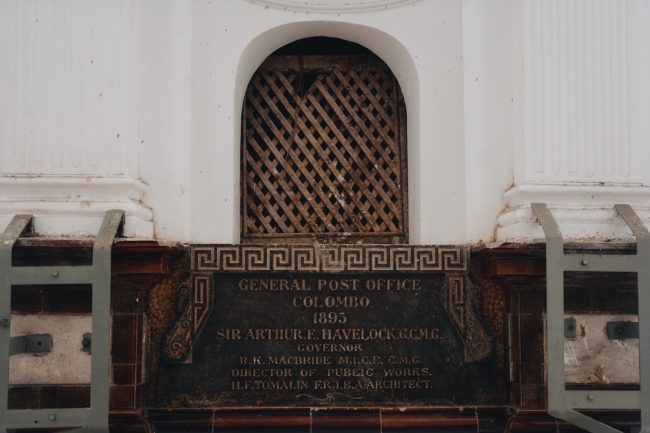
The former GPO building, which opened for operations in 1895, is believed to be architect Tomalin’s greatest work. Image credit: Roar.lk/Minaali Haputantri
The history of the former GPO building can be traced back beyond the date of its construction. Following decades of being housed in a number of different places around the city, including in what is now the Old Dutch Museum in Pettah and even part of the President’s House itself (then the British Governor’s Residence), the GPO in Colombo was afforded its own premises under British rule. Constructing the actual building, however, promised to be a mammoth task, as the land allocated for its construction was composed almost entirely of granite formations, which had to be broken down and disposed of in order to make the land viable for its purpose.
It was Mr. Herbert Frederick Tomalin of the Public Works Department (PWD) who proved capable of this task. Assisted by the architect, Mr. Tunstall, Tomalin set out to construct a building that could rival some of the finer structures of its kind in Europe.
And rival them it did. The building, whose construction began in 1891, exceeded its original estimated cost of Rs. 210,000 by more than Rs. 160,000, due largely to Tomalin’s insistence on using the finest labour and materials in its fabrication. The unique two-tone granite used to decorate the building was sourced from a number of leading quarries in Ruwanwella and Ratnapura and transported via the Kelani River, which at that point in history was no easy task. A staggering 375 workers, of whom 180 were specialists in their respective crafts, were employed in the construction of the building, which took nearly five years to complete.

The carvings on the grand staircase were inspired by those in the Royal palaces of Great Britain. Image credit: Roar.lk/Minaali Haputantri
If the newspapers at the time are anything to go by, it is with a passion comparable to madness that Mr. Tomalin went about designing and constructing what he considered his greatest work. The building was far superior to anything that had been attempted in Colombo before and this is evident in the observations made by Mr. Robert Knox MacBride, the then-director of the PWD, whose records state, “Ceylon workmen are unaccustomed to anything so elaborate. Though they have been slow, they have done their work well and creditably under Mr. Tomalin’s instruction.”
The building, upon opening for operations in July 1895, was fully equipped for the work of the Postal Department and remained the nucleus of the Sri Lanka Postal Service until 2001, when, due to mounting security concerns, postal operations were shifted to the current Postal Department Headquarters building on D. R. Wijewardena Mawatha.
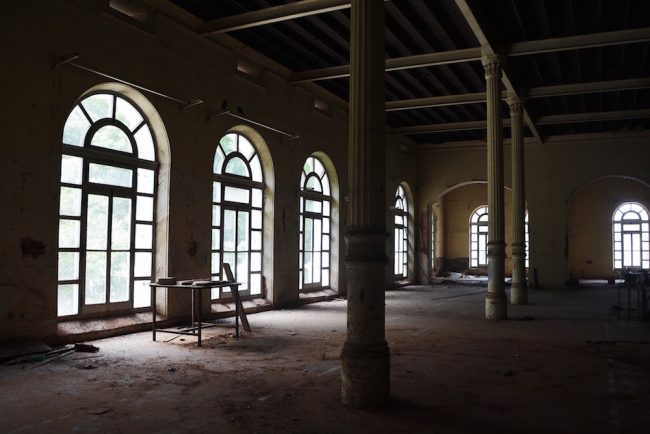
The former GPO building, closed to the public since 2001, has been under renovation but will be hosting Cinnamon Colomboscope 2016 from August 25 to September 1. Image credit: Roar.lk/Minaali Haputantri
Left effectively abandoned and closed to the public ever since, the building, whose fall from grace went unnoticed by many due to its being hidden away in a high-security zone for so long, will come alive once again for Cinnamon Colomboscope 2016.
Susanne Jaschko, connoisseur in the field of media arts and curator of Testing Grounds, was instrumental in choosing the former GPO building as the venue for the festival, due largely to the fact that the building is a tangible representation of Sri Lanka’s history of communication technology, being one that witnessed the transition from snail mail to telegraphic communication and telephone services. “With Colomboscope, we are looking into the present of our digital cultures, and how present communication technologies shape your view of the world, our geographies, and our every-day life. So the connection is there,” explained Jaschko.
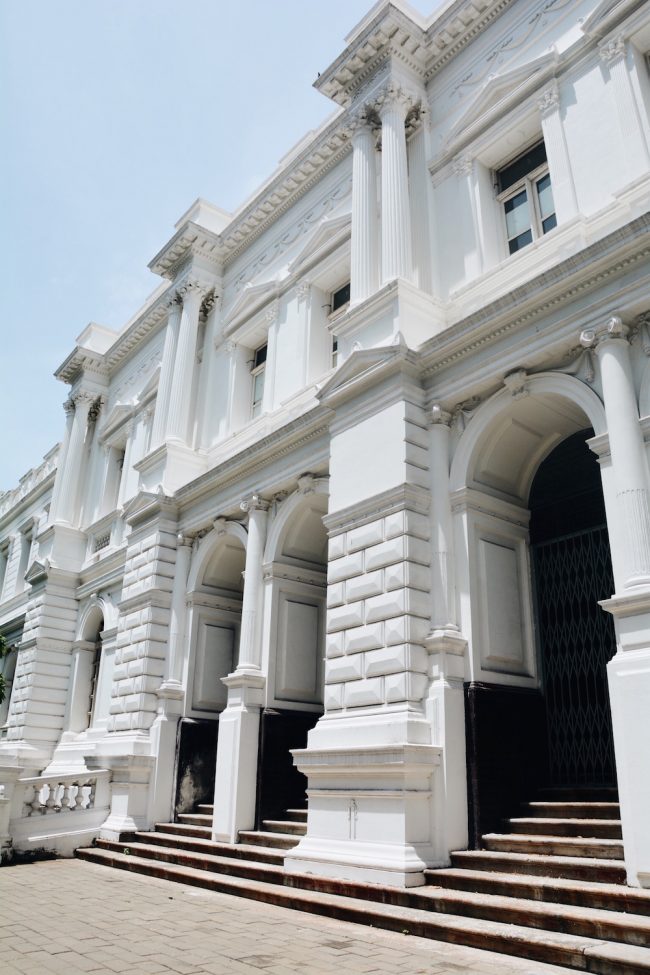
Given the role it has played in Sri Lanka’s history of communication technology, the GPO building is an apt location to host Testing Grounds. Image credit: Roar.lk/Minaali Haputantri
In spite of the years since it was last used ‒ or perhaps because of them ‒ the venue promises to be one like no other. Once revered as one of the most impressive and well-fitted out buildings in the city, the former GPO retains its grandeur, albeit in a more unconventional fashion. From the grand staircase at the entrance whose once exquisitely painted carvings have faded so as to give it a more nostalgic feel, to the rooms upstairs that once housed the workings of the postal department and, for the time being, house the installations and activities that form parts of this year’s festival, there is much to see at Cinnamon Colomboscope 2016. Installations, workshops, film screenings, performances and conversations aside, this unprecedented opportunity to explore the former GPO building is one that should not be missed.
Featured image credit: Roar.lk/Minaali Haputantri

